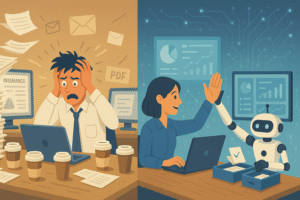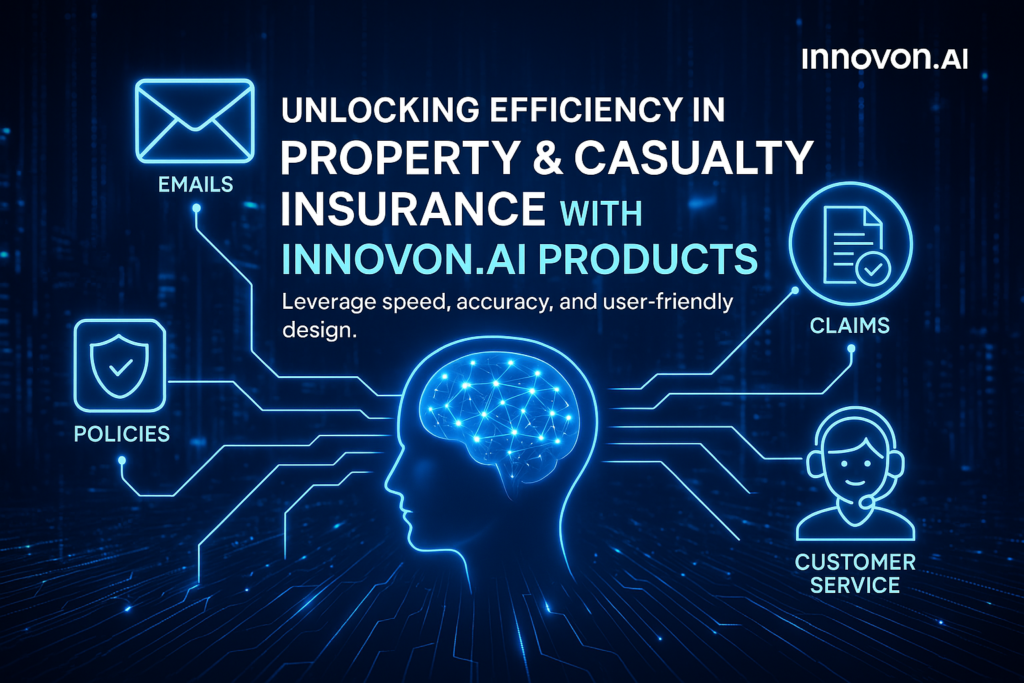
The American dream, often visualized with a cozy home and a secure future, is increasingly facing unprecedented challenges. From shifting demographics impacting urban and rural landscapes to the growing ferocity of environmental events, the Property and Casualty (P&C) insurance industry in the USA is standing at a crucial juncture. The next 5 to 10 years promise to be a period of significant transformation, demanding a proactive approach to understand and mitigate these evolving threats. But fear not, because a powerful ally is emerging: Artificial Intelligence (AI). This article will explore the key demographic and environmental challenges facing US P&C insurance and how cutting-edge AI innovations are poised to revolutionize the way we protect our homes, businesses, and futures.
Demographic Shifts: A Changing Landscape
The very fabric of American communities is changing. Let’s look at some key demographic trends and their potential impact on P&C insurance:
- Urbanization and Suburban Sprawl: As populations concentrate in urban centers and surrounding suburbs, the density of insured properties increases. This can lead to higher aggregate losses in the event of localized disasters, straining insurance resources. Think about a major hailstorm hitting a densely populated suburban area – the sheer volume of claims can overwhelm traditional processing methods.
- Aging Population: An increasing number of older adults often require specific types of coverage and may be more vulnerable to certain risks. Their housing needs and susceptibility to weather-related events need careful consideration by insurers. For example, accessibility modifications in homes for aging individuals might become a more common insurance claim after a covered event.
- Generational Differences: Younger generations have different expectations and preferences when it comes to insurance. They are digital natives, comfortable with online interactions and personalized services. P&C insurers need to adapt their communication and service delivery models to cater to these tech-savvy consumers. Imagine a first-time homebuyer expecting to get instant insurance quotes and file claims through a mobile app.
- Migration Patterns: Shifts in population across different states and regions, often driven by economic opportunities or climate concerns, can alter the risk profiles of specific geographic areas. States experiencing population influx might see increased demand for insurance, while those facing an exodus could face a shrinking customer base. Consider the impact of people moving away from areas prone to severe hurricanes, leading to changes in the insured value concentration.
These demographic shifts create a complex puzzle for P&C insurers. Understanding these trends is the first step towards building resilient and relevant insurance products and services.

Environmental Threats: The New Normal
Perhaps the most pressing challenge facing the P&C insurance industry is the escalating impact of environmental threats:
- Climate Change: Rising global temperatures are fueling more frequent and intense extreme weather events. We’re seeing more powerful hurricanes, devastating wildfires, severe droughts, and unprecedented flooding. These events lead to significant property damage and business disruptions, resulting in substantial insurance payouts. Think of the increasing number of billion-dollar weather disasters impacting various parts of the US each year.
- Increased Frequency and Severity of Natural Disasters: Whether it’s coastal erosion due to rising sea levels, inland flooding from intense rainfall, or widespread damage from wildfires in drought-stricken regions, the risks are becoming more pronounced and unpredictable. Insurers need to accurately assess and price these evolving risks.
- Secondary Perils: Beyond the major headline-grabbing events, so-called “secondary perils” like severe convective storms (including hail, tornadoes, and straight-line winds) are also becoming more frequent and costly. These localized events can collectively contribute significantly to overall losses.
These environmental threats are not just abstract concerns; they are tangible realities impacting communities and businesses across the nation, posing significant challenges to the sustainability and profitability of the P&C insurance industry.

AI to the Rescue: A Futuristic Toolkit for P&C Insurance
Amidst these challenges, Artificial Intelligence (AI) offers a powerful suite of tools to help the P&C insurance industry adapt, innovate, and ultimately better protect its customers. Let’s explore some key AI applications:
-
Enhanced Risk Assessment and Underwriting:
- Current AI: Machine learning algorithms can analyze vast datasets from diverse sources (e.g., weather patterns, geographical data, building permits, social media) to develop more accurate risk profiles for individual properties and geographic areas. This goes beyond traditional actuarial models. For example, AI can identify subtle correlations between vegetation density, historical weather patterns, and wildfire risk in a specific neighborhood, leading to more precise premium calculations.
- Future AI: Imagine AI-powered digital twins of properties that continuously monitor environmental factors and predict potential risks in real-time. This could allow for proactive risk mitigation advice to homeowners and more dynamic pricing based on evolving conditions.
-
Personalized Insurance Products and Pricing:
- Current AI: AI can analyze customer data and behavior to offer more tailored insurance products and pricing. For instance, telematics data from vehicles can be used to reward safe drivers with lower premiums. Similarly, smart home device data could potentially inform homeowners insurance pricing based on implemented safety measures.
- Future AI: Expect hyper-personalized insurance plans that adapt to individual lifestyles and evolving risk profiles. An AI assistant could proactively suggest coverage adjustments based on life events or anticipated environmental changes in the customer’s area.

-
Streamlined Claims Processing:
- Current AI: AI-powered image recognition and natural language processing (NLP) can automate parts of the claims process, such as initial damage assessment from photos submitted by policyholders and extraction of key information from claim documents. This speeds up the process and reduces administrative burden. Imagine an app where you can upload photos of storm damage, and AI instantly estimates the potential repair costs and initiates the claim process.
- Future AI: Fully automated claims processing with AI-powered chatbots guiding policyholders through the entire process and even authorizing payouts for straightforward claims. Drones equipped with AI-powered computer vision could conduct rapid and comprehensive damage assessments in disaster-stricken areas, providing insurers with near real-time information.
-
Fraud Detection:
- Current AI: Machine learning algorithms can identify patterns and anomalies in claims data that may indicate fraudulent activity, helping insurers reduce losses. For example, AI can flag claims with inconsistencies in the reported damage or unusual patterns of claims from the same address.
- Future AI: More sophisticated AI models that can analyze multimedia data (images, videos, audio) and social media activity to detect increasingly complex fraud schemes proactively.

- Enhanced Customer Service:
- Current AI: AI-powered chatbots and virtual assistants can provide instant answers to customer queries, guide them through policy information, and assist with basic tasks, improving customer satisfaction and freeing up human agents for more complex issues. Think of getting instant answers to your policy questions 24/7 through an AI chatbot on the insurer’s website or app.
- Future AI: Highly empathetic and personalized AI assistants that can proactively reach out to customers with relevant information, offer tailored advice on risk mitigation, and even anticipate their needs.
Examples in Action:
- Innovon.AI: This AI-First InsurTech company utilizes AI chatbots for policy sales and claims handling, offering a faster and more user-friendly experience. Their AI can review claims and authorize payments in minutes for simple cases.
- Zesty.ai: This company uses AI and satellite imagery to assess property-level risks, including wildfire and flood potential, providing insurers with more granular and accurate risk insights.
- Many telematics-based auto insurance programs leverage AI to analyze driving behavior and offer personalized discounts, promoting safer driving habits.

Addressing the Challenges with AI-Powered Remedies:
Let’s revisit the demographic and environmental challenges and see how AI can offer solutions:
- Urbanization and Suburban Sprawl: AI-powered risk modeling can help insurers better understand the aggregated risks in densely populated areas and develop appropriate coverage and reinsurance strategies. Smart city data integrated with AI can provide real-time insights into potential hazards and facilitate quicker responses after an event.
- Aging Population: AI can analyze health data (with consent) and home characteristics to offer tailored coverage for seniors, including options for home care or modifications. AI-powered virtual assistants can also provide proactive safety reminders and support.
- Generational Differences: AI-powered personalized communication and digital-first service models can cater to the preferences of younger generations, making insurance more accessible and engaging.
- Migration Patterns: AI can analyze migration data and environmental risk forecasts to help insurers anticipate shifts in demand and adjust their underwriting strategies accordingly.
- Climate Change and Natural Disasters: This is where AI’s potential is truly transformative. Predictive analytics using climate models and historical data can help insurers better forecast the frequency and severity of extreme weather events, allowing for more accurate risk pricing and the development of innovative disaster resilience products.
- Increased Frequency and Severity of Natural Disasters: AI-powered early warning systems, leveraging satellite imagery and sensor data, can provide timely alerts to policyholders, enabling them to take proactive steps to protect their property. Post-disaster, AI-powered drones and image analysis can rapidly assess damage and expedite claims processing.
- Secondary Perils: AI can analyze granular weather data and historical claims information to better understand the risks associated with secondary perils at a localized level, leading to more accurate pricing and targeted risk mitigation strategies.

The next 5 to 10 years will be critical for the US P&C insurance industry. The confluence of evolving demographics and escalating environmental threats demands a fundamental shift in how insurers operate. AI is not just a technological buzzword; it’s a powerful enabler that can help the industry navigate these complex challenges and build a more resilient future for everyone.
However, the successful adoption of AI requires careful consideration of ethical implications, data privacy concerns, and the need for a skilled workforce that can work alongside these intelligent systems. Collaboration between insurers, technology providers, policymakers, and researchers will be crucial to unlock the full potential of AI in the P&C sector.
By embracing AI innovation, the US P&C insurance industry can move beyond simply reacting to losses and towards proactively predicting, preventing, and mitigating risks. This will not only protect the financial well-being of individuals and businesses but also contribute to building more sustainable and resilient communities in the face of a changing world. The future of P&C insurance is intelligent, adaptive, and ultimately, more secure.
Disclaimer: This article provides a general overview of potential future trends and AI applications in the US P&C insurance industry. Specific technological developments and their adoption timelines may vary.





